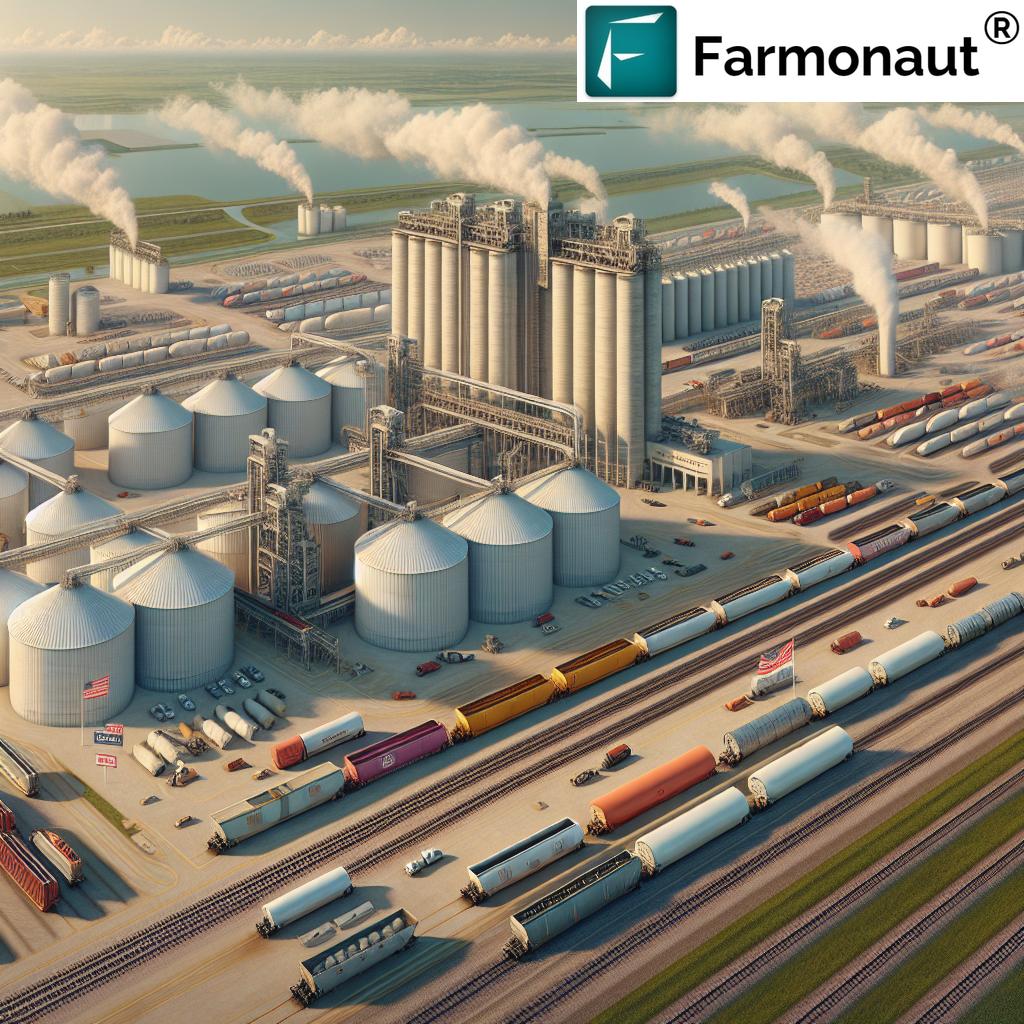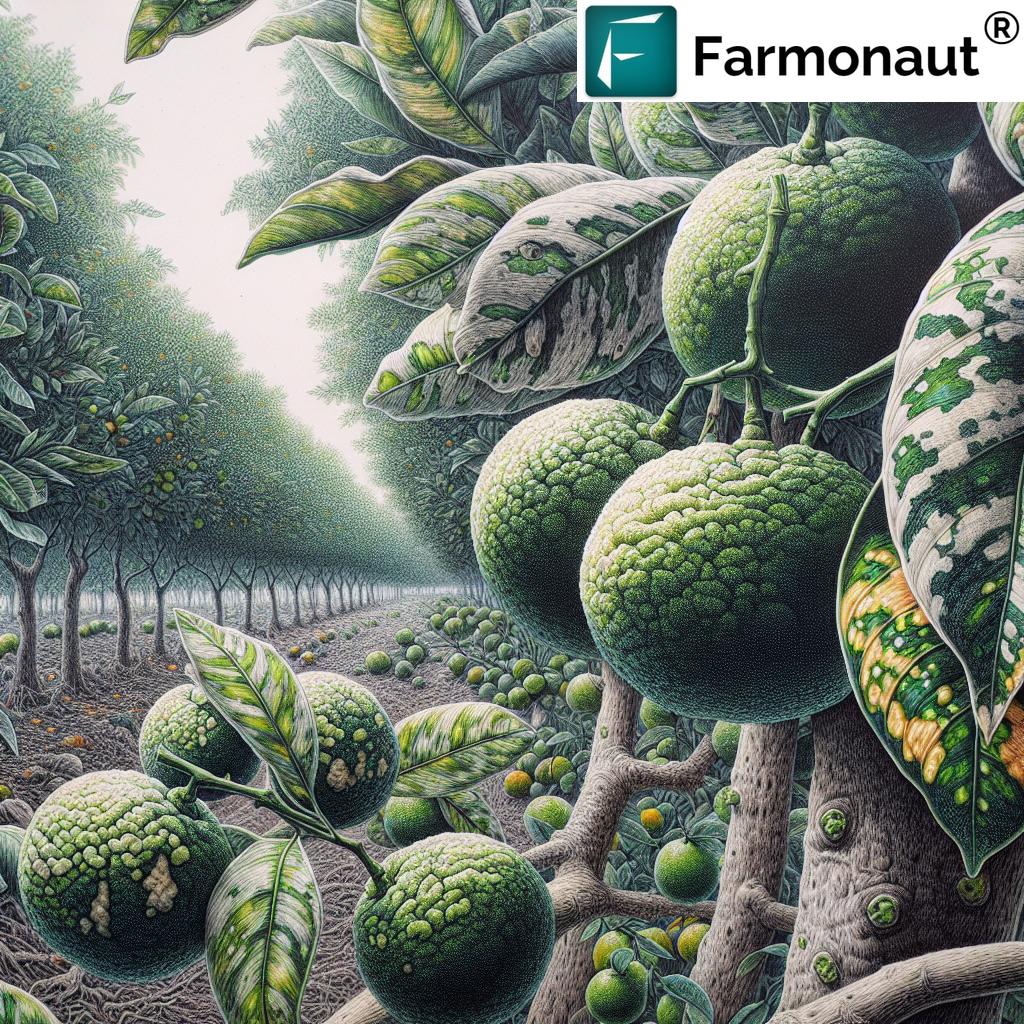Does the US Produce Fertilizer? 7 Powerful Insights for 2024
“The U.S. produced over 20 million metric tons of nitrogen fertilizer in 2023, ranking among the world’s top five producers.”
Overview of Fertilizer Production in the U.S.
As we delve into the agricultural fertilizer market USA, one key question arises: Does the US produce fertilizer? The resounding answer is yes. The fertilizer industry in the United States is both robust and highly advanced, playing a pivotal role in enhancing soil fertility, boosting agricultural productivity, and sustaining the modern farming sector.
The U.S. consistently ranks as the world’s fourth-largest fertilizer-consuming nation, accounting for approximately 9% of total global consumption. When it comes to domestic production, the country stands strong, ranking third in phosphate and fourth in nitrogen fertilizer capacity, according to data from BC Insight.
To put things into perspective: the total U.S. fertilizer production capacity is 22.7 million nutrient tonnes. This capacity is primarily concentrated among a handful of large companies that dominate the industry landscape. The nation’s agricultural success, food security, and even forestry productivity hinge on these essential products—making fertilizers a cornerstone of modern American farming.
Key Takeaways: U.S. Fertilizer Industry Landscape
- The U.S. is a major global fertilizer producer and consumer.
- Production is highly concentrated among large domestic and multinational companies.
- Key nutrient types produced include nitrogen, phosphate, and potash fertilizers.
- States such as Louisiana, Florida, Illinois, New Mexico, and Utah host significant production facilities.
Major Fertilizer Producers in the US
Understanding major fertilizer producers in the US is essential when evaluating the industry’s capacity and efficiency. The domestic fertilizer industry is dominated by global leaders, each specializing in different segments of fertilizer manufacturing. Let’s explore the most prominent players:
1. CF Industries Holdings, Inc.
- Headquarters: Northbrook, Illinois
- Role: One of the largest manufacturers and distributors of agricultural fertilizers worldwide
- Products: ammonia, urea, ammonium nitrate
- Key Facility: World’s largest ammonia production complex in Donaldsonville, Louisiana
- Production Network: 17 ammonia plants spread across 9 manufacturing complexes globally
2. The Mosaic Company
- Headquarters: Tampa, Florida
- Role: Leading U.S. phosphate and potash fertilizer producer
- Products: Diammonium phosphate (DAP), Monoammonium phosphate (MAP)
- Locations: Extensive operations in Florida and Louisiana (4 major sites)
3. Nutrien Ltd.
- Formed By: Merger of Agrium and PotashCorp
- Role: World’s top producer of potash, a leader in nitrogen and phosphate fertilizers
- Product Portfolio: Potash, nitrogen, phosphate fertilizers
- Facilities: Several production sites across the United States, significantly contributing to overall domestic capacity
Other Key Companies among US Fertilizer Producers:
- Yara North America – Nitrogen fertilizers, including ammonia and urea.
- Koch Fertilizer – Ammonia, urea, UAN, ammonium nitrate.
- PCS Nitrogen (a division of Nutrien) – Major nitrogen fertilizer manufacturing process facilities.
Fertilizer Types and Production Processes
The U.S. fertilizer industry produces a diverse range of nutrient products to meet the needs of the agricultural sector. We can categorize fertilizers based on their major nutrient content:
Nitrogen Fertilizer Manufacturing Process
- Ammonia:
- Process: Haber-Bosch method, combining air-derived nitrogen and hydrogen extracted from natural gas.
- Use: Direct soil application or intermediate for other nitrogen fertilizers.
- Urea:
- Process: Ammonia reacts with carbon dioxide; resulting in solid, highly concentrated nitrogen source.
- Use: Widely applied due to ease of handling; suitable for both broadcasting and foliar use.
- Ammonium Nitrate:
- Process: Ammonia neutralizes nitric acid to produce this nutrient-rich fertilizer.
- Use: High nutrient concentration; widely used in row crops and grains.
Phosphate and Potash Fertilizer Production
- Phosphate Fertilizers:
- Source: Extracted from naturally occurring phosphate rock.
- Production Processes:
- Beneficiation, to concentrate phosphate rock.
- Chemical processing, usually with sulfuric and/or phosphoric acid to yield DAP or MAP.
- End Products: Diammonium phosphate (DAP), Monoammonium phosphate (MAP)
- Potash Fertilizers:
- Source: Potash salts, primarily potassium chloride (KCl).
- Production: Solar evaporation methods in states such as New Mexico and Utah.
- Use: Boosts crop resilience, water retention, and quality.
Why These Fertilizers Matter
- Enhance soil fertility for increased productivity.
- Support modern agriculture’s demand for high efficiency and sustainability.
- Phosphate fertilizers are especially vital for root development and crop vigor.
- Nitrogen fertilizers like urea and ammonium nitrate are essential for leafy growth and protein synthesis.
- Potash improves drought resistance and disease mitigation.
Economic Impact of Fertilizer Industry
The economic impact of fertilizer industry in the U.S. is substantial, affecting employment, local economies, and the broader agricultural supply chain.
- As of 2024, the fertilizer manufacturing sector employed approximately 23,424 people. The industry shows continued stability, with around 16.4 employees per business on average (IBISWorld).
- Employment has steadily increased at an annualized rate of 0.4% between 2019 and 2024.
- Top roles in the sector include plant operators, chemical engineers, environmental specialists, and distribution logistics professionals.
- The sector’s GDP contribution is significant, underpinning the productivity and export capacity of the broader agricultural industry.
“In 2022, the U.S. imported nearly 25% of its fertilizer needs, mainly from Canada, Russia, and Trinidad & Tobago.”
Fertilizer Imports and Exports US
Despite a formidable domestic production base, the U.S. remains reliant on fertilizer imports to meet the full spectrum of its national requirements.
In 2024 alone, the U.S. imported approximately 27 million tonnes of fertilizers (IndexBox). Here’s a deeper look:
Major Fertilizer Import Partners and Trends
- Canada: Principal source, accounting for roughly 51% of total U.S. imports (mainly potash and urea).
- Belarus & Russia: Significant suppliers of potash and complex fertilizers, though recent geopolitical tensions may affect this pattern.
- Other Major Importers: Trinidad & Tobago (ammonia), Morocco (phosphate), Israel (potash).
Why Does the U.S. Import Fertilizer?
- Domestic production is strong in nitrogen and phosphate, but potash is imported in substantial quantities due to limited U.S. deposit sizes.
- Importing allows agricultural producers to access a broader range of nutrient blends for specialized crops and regional needs.
- Transportation costs and market dynamics can make imports cost-effective, especially from nearby Canada.
The U.S. is also a net exporter of some fertilizer products (notably nitrogen-based) to neighboring countries, but the fertilizer imports and exports US balance is dominated by inbound flows due to the size and diversity of American agriculture.
Fertilizer Transportation and Distribution
Efficient fertilizer transportation and distribution is at the heart of the U.S. fertilizer supply chain—ensuring vital nutrients reach farmers nationwide, precisely when needed for planting and growing seasons.
How is Fertilizer Transported in the U.S.?
- Barge: Used extensively for river transport, especially along the Mississippi River and to ports such as New Orleans for imported bulk fertilizers.
- Rail: Ideal for long-distance delivery, especially for ammonia, potash, and urea fertilizers from production centers.
- Pipelines: Specialized pipelines transport ammonia directly to downstream facilities and regional distributors.
- Truck: Facilitates the final leg of the distribution process, delivering products directly to cooperatives and farmers.
According to the U.S. Department of Agriculture’s Ag Transport, ports like New Orleans are critical hubs for both imported and domestically produced fertilizers, feeding into a vast, multimodal inland distribution network.
Distribution Challenges and Solutions
- Weather disruptions may impact river and rail systems, yet robust logistical planning and diversified routes help minimize delays.
- Growing emphasis on digitization and fleet management technologies improves delivery efficiency and transparency.
For agribusinesses looking to optimize their fleet and logistics, Farmonaut’s Fleet Management solution provides advanced digital tools for real-time vehicle tracking, route optimization, operational safety, and better management of agricultural machinery. These digital tools allow businesses to minimize operational costs and guarantee timely fertilizer deliveries across vast farming landscapes.
Sustainable Fertilizer Practices & Environmental Considerations
As the world embraces sustainability, so too must the fertilizer industry in the United States. Increasing scrutiny around nutrient runoff and environmental impact has prompted the sector to invest in sustainable fertilizer practices, including innovation in fertilizer formulations and application methodologies.
Environmental Impacts of Fertilizer Use
- Nutrient Runoff: Excess fertilizer can leach into waterways, encouraging algal blooms and threatening aquatic ecosystems.
- Greenhouse Gas Emissions: Nitrogen fertilizers release nitrous oxide—a potent greenhouse gas.
- Soil Health: Over-application can cause long-term soil degradation and diminish soil biodiversity.
Sector-Wide Sustainable Fertilizer Practices
- Slow-release and Enhanced Efficiency Fertilizers: Reduce leaching and improve nutrient use efficiency.
- Precision Application: Targeted nutrient delivery minimizes waste and environmental harm.
- Organic and Bio-Based Fertilizers: Substitute a portion of synthetic products, supporting soil biology and carbon sequestration.
- Recycling Nutrient-Rich Byproducts: From agricultural, municipal, and food processing waste streams.
Industry leaders such as Mosaic, CF Industries, and Nutrien have each launched major sustainability initiatives, including reductions in greenhouse gas emissions and investments in renewable energy sources for fertilizer manufacturing.
Environmental compliance is further supported by innovations like carbon footprinting. With tools such as Farmonaut’s Carbon Footprinting Solution, agribusinesses and farmers can measure real-time emissions, monitor progress toward sustainability, and ensure compliance with evolving regulations. This proactive approach is invaluable for both environmental stewardship and market competitiveness.
Precision Agriculture Fertilizer Use & Farmonaut’s Contribution
Embracing technology is revolutionizing precision agriculture fertilizer use in the United States. The integration of digital solutions, big data analytics, and satellite imagery is reshaping fertilizer management, reducing resource wastage, and maximizing yields.
Precision Agriculture: The Future of Fertilizer Management
- Site-Specific Application: Technologies like Farmonaut’s satellite-driven AI advisory pinpoint nutrient needs down to the field or zone, ensuring optimal application rates.
- Real-Time Monitoring: Multispectral satellite imagery and artificial intelligence track crop health, soil moisture, and vegetation indices (like NDVI), enabling data-driven fertilizer adjustments.
- Resource Optimization: With digital resource management platforms, farmers reduce input costs, minimize yield gaps, and maintain environmental integrity.
Beyond productivity and sustainability, blockchain-based product traceability by Farmonaut increases transparency, ensuring every stage from farm input to final harvest is securely tracked—vital for modern supply chains and regulatory compliance.
Farmonaut’s subscription-based agritech offerings cater to individual farmers, agribusinesses, and government agencies—all accessible via web, Android, and iOS platforms, along with powerful APIs and detailed developer documentation.
For plantations, resource managers, and large-scale operators, Farmonaut’s Large Scale Farm Management application empowers users with scalable, modular digital farm administration solutions—improving efficiency and supporting rapid scaling of diverse farming operations.
How Farmers Benefit from Advanced Fertilizer Management Tools
- Make informed adjustments to practices to optimize input costs and yields, regardless of farm size.
- Adopt sustainable farming while ensuring productivity.
- Be prepared for evolving financial, environmental, and market pressures—especially for those seeking crop loan and insurance with satellite-based verification for better loan access and fewer disputes.
U.S. Fertilizer Industry Overview Table
| Major U.S. Fertilizer Producers | Estimated Annual Production (Million Tons) | Estimated U.S. Market Share (%) | Key Fertilizer Types Produced | Sustainable Practices Implemented |
|---|---|---|---|---|
| Mosaic Company | >6 (Phosphate/DAP/MAP) | ~25% (Phosphate) | Phosphate, Potash, DAP, MAP | Water conservation, GHG emission reduction, R&D in sustainable mining |
| CF Industries Holdings | >10 (Nitrogen) | ~35% (Nitrogen) | Ammonia, Urea, Ammonium Nitrate | Energy efficiency, reduced N2O emissions, precision nutrient management |
| Nutrien Ltd. | ~8 (Potash/Nitrogen/Phosphate) | ~20% (Potash), 15% (Phosphate) | Potash, Nitrogen, Phosphate | Renewable energy investments, sustainable potash mining, digital farm management |
| Koch Fertilizer | ~4 (Nitrogen) | 8% (Nitrogen) | Urea, Ammonia, UAN, Ammonium Nitrate | Waste-to-energy, sustainable ammonia production |
| Yara North America | ~2.5 | 5% (Nitrogen/Blends) | Nitrogen, Ammonia, Urea, Specialty Blends | Carbon-neutral fertilizer R&D, climate-smart practices |
Frequently Asked Questions (FAQ)
Does the US produce fertilizer?
Yes—the United States is a major global player in fertilizer production, ranking within the top five for most key nutrient groups, including nitrogen and phosphate.
Where are the largest fertilizer plants in the US located?
The largest ammonia (nitrogen) production complex is located in Donaldsonville, Louisiana, with major phosphate operations in Florida and additional manufacturing in Illinois, Utah, and New Mexico.
Why does the US import so much fertilizer?
While domestic production is significant, the U.S. imports roughly 25% of its fertilizer needs, primarily potash from Canada and select nitrogen/phosphate compounds—ensuring access to broader nutrient blends and meeting demand peaks.
How does the fertilizer manufacturing process impact the environment?
Fertilizer manufacturing releases greenhouse gases, can contribute to water pollution through nutrient runoff, and may affect soil health with over-application. Sustainable practices and new technologies are helping to mitigate negative impacts.
What is precision agriculture and how is it changing fertilizer use?
Precision agriculture uses satellite, drone, and sensor data to tailor fertilizer application, reducing waste, minimizing environmental impact, and maximizing yield. Platforms like Farmonaut are central to making these practices accessible.
What is the future of the fertilizer industry in the United States?
The industry will likely see further consolidation, greater import reliance for potash, and increasing digitization and sustainability measures, ensuring agricultural productivity in a changing climate.
Conclusion: The U.S. Fertilizer Industry—At the Heart of Modern Agriculture
To summarize, the fertilizer industry in the United States is both a domestic powerhouse and a critical node in the global nutrient supply chain. As a nation, we are not only the world’s major consumer of fertilizers, but also a leading producer—particularly of nitrogen and phosphate products. While our imported fertilizer dependency is notable for potash and certain specialized blends, diverse domestic capacity and innovation drive continued agricultural success.
Fertilizers remain essential for enhancing soil fertility, boosting agricultural productivity, and ensuring food security. The industry’s economic impact extends far beyond employment, sustaining local economies, supporting export markets, and driving technological advancement.
As environmental and sustainability challenges become increasingly central, the industry’s embrace of precision agriculture fertilizer use, digital management solutions, and sustainable practices will help balance productivity with stewardship—ensuring that American agriculture remains vibrant for generations to come.














